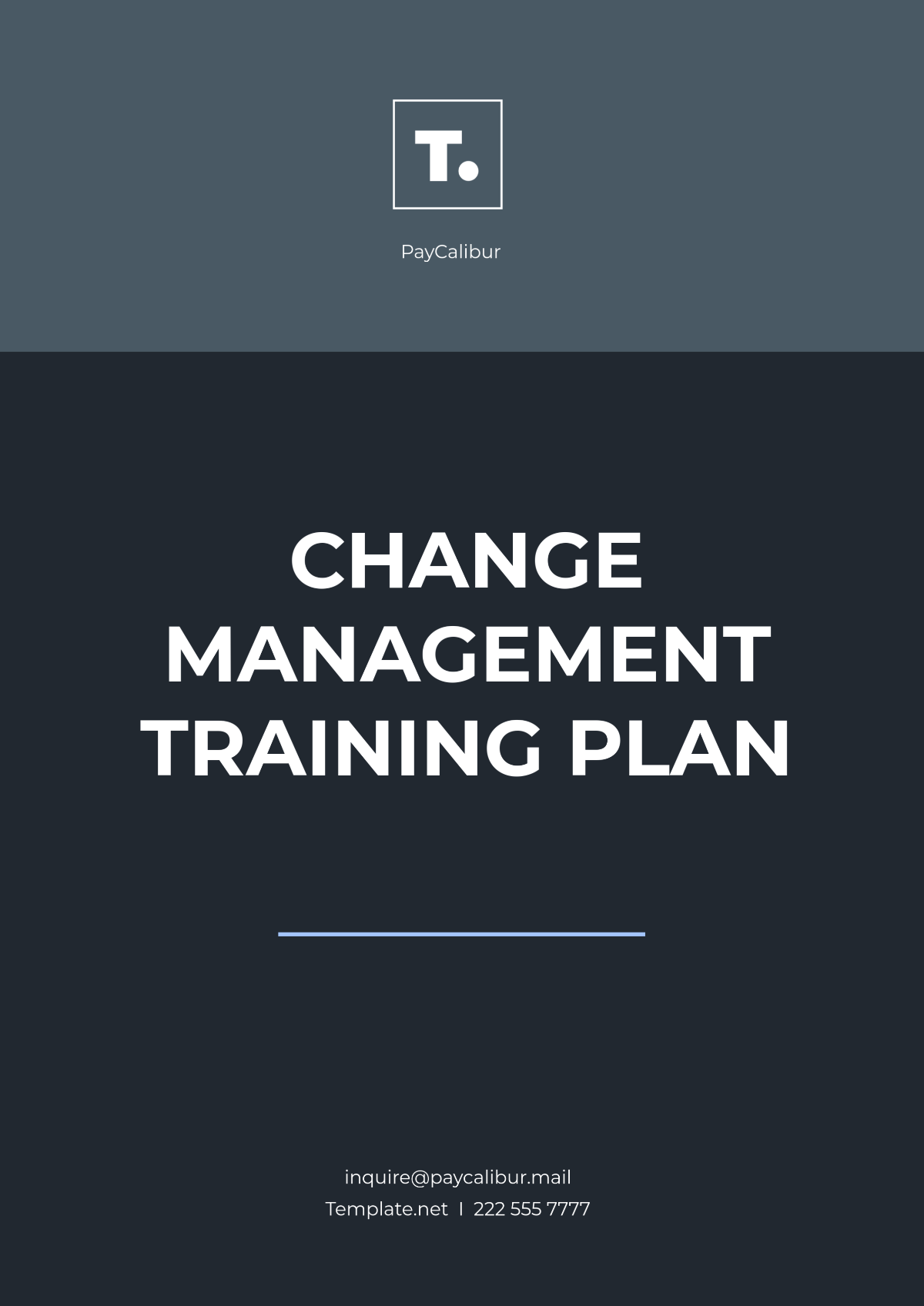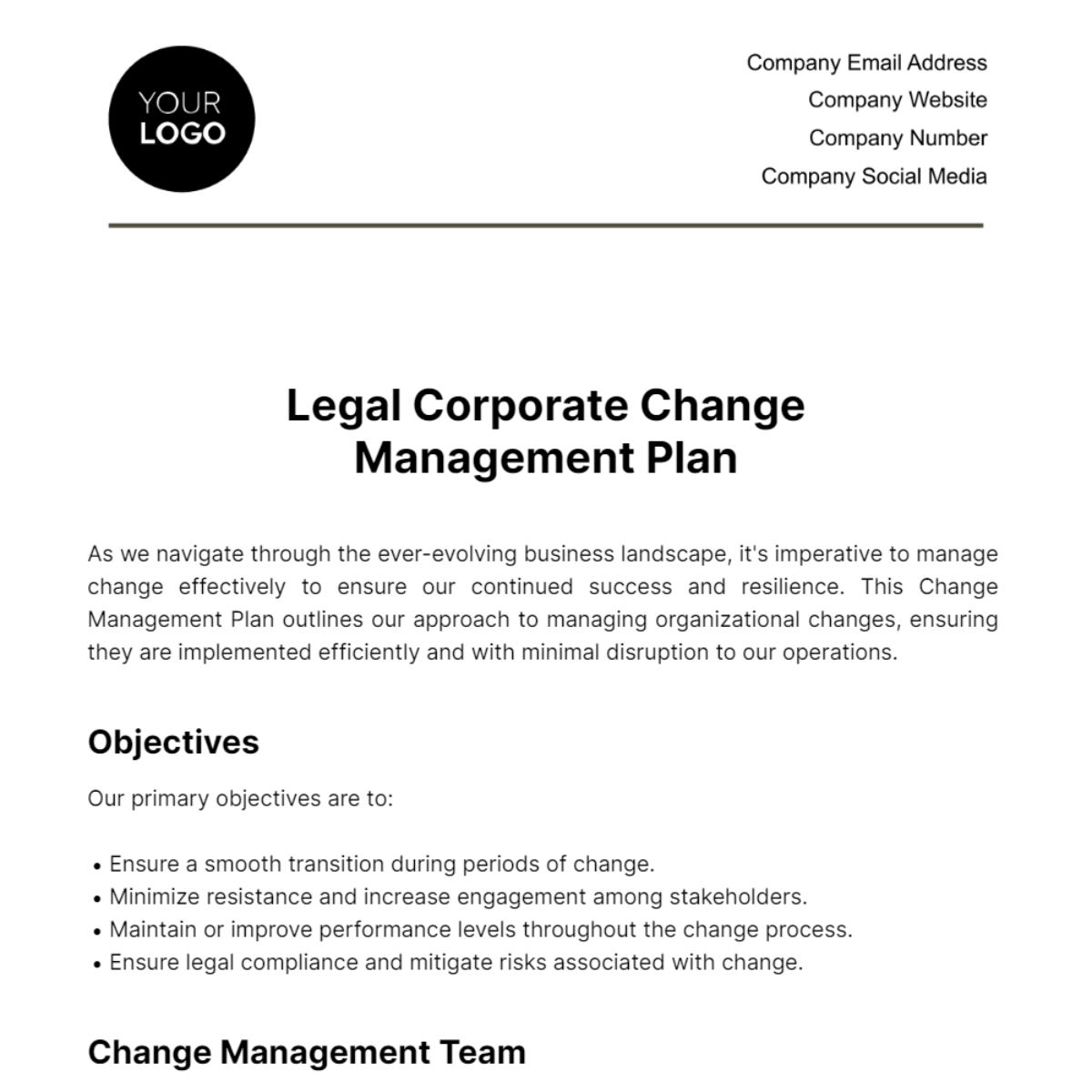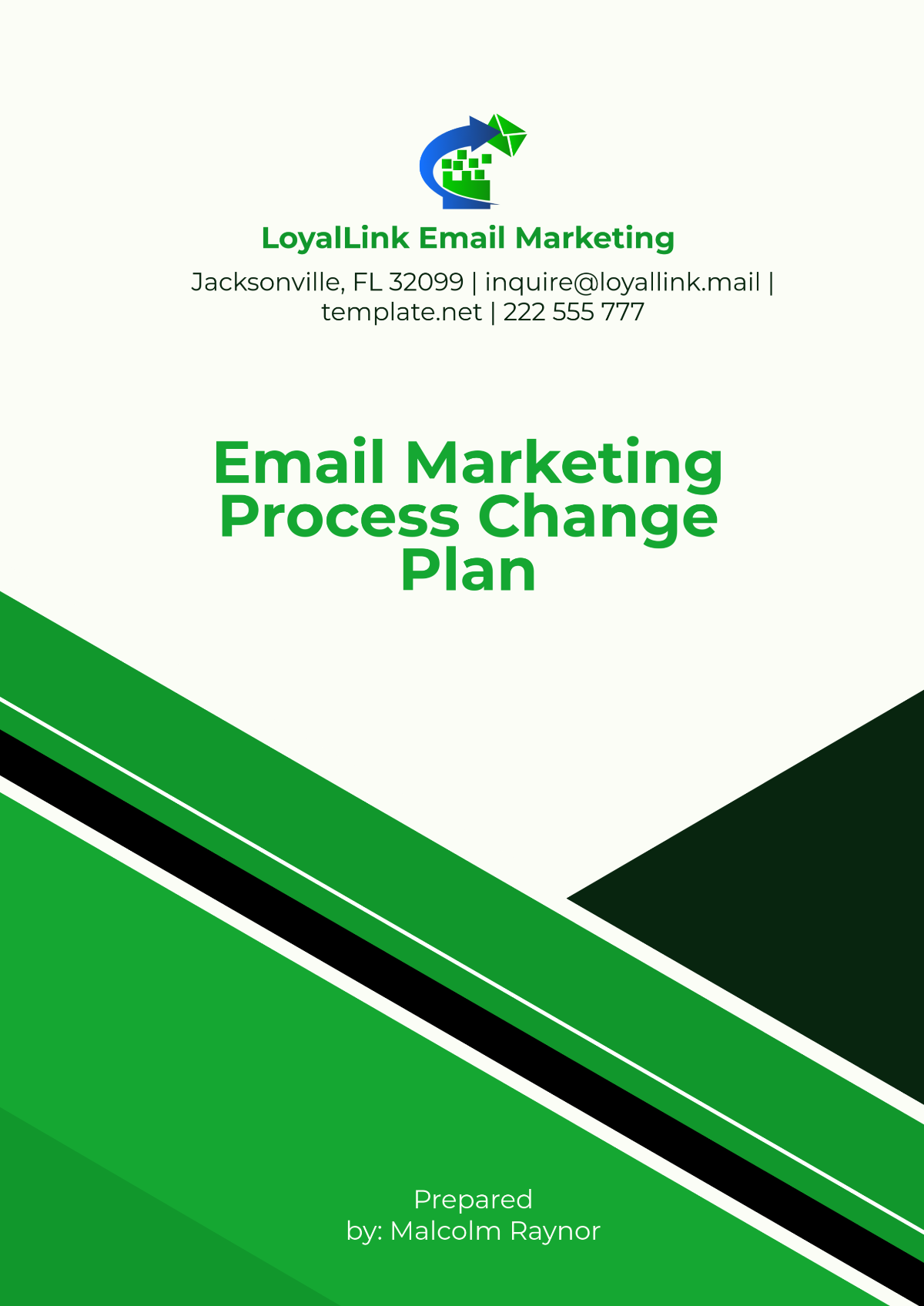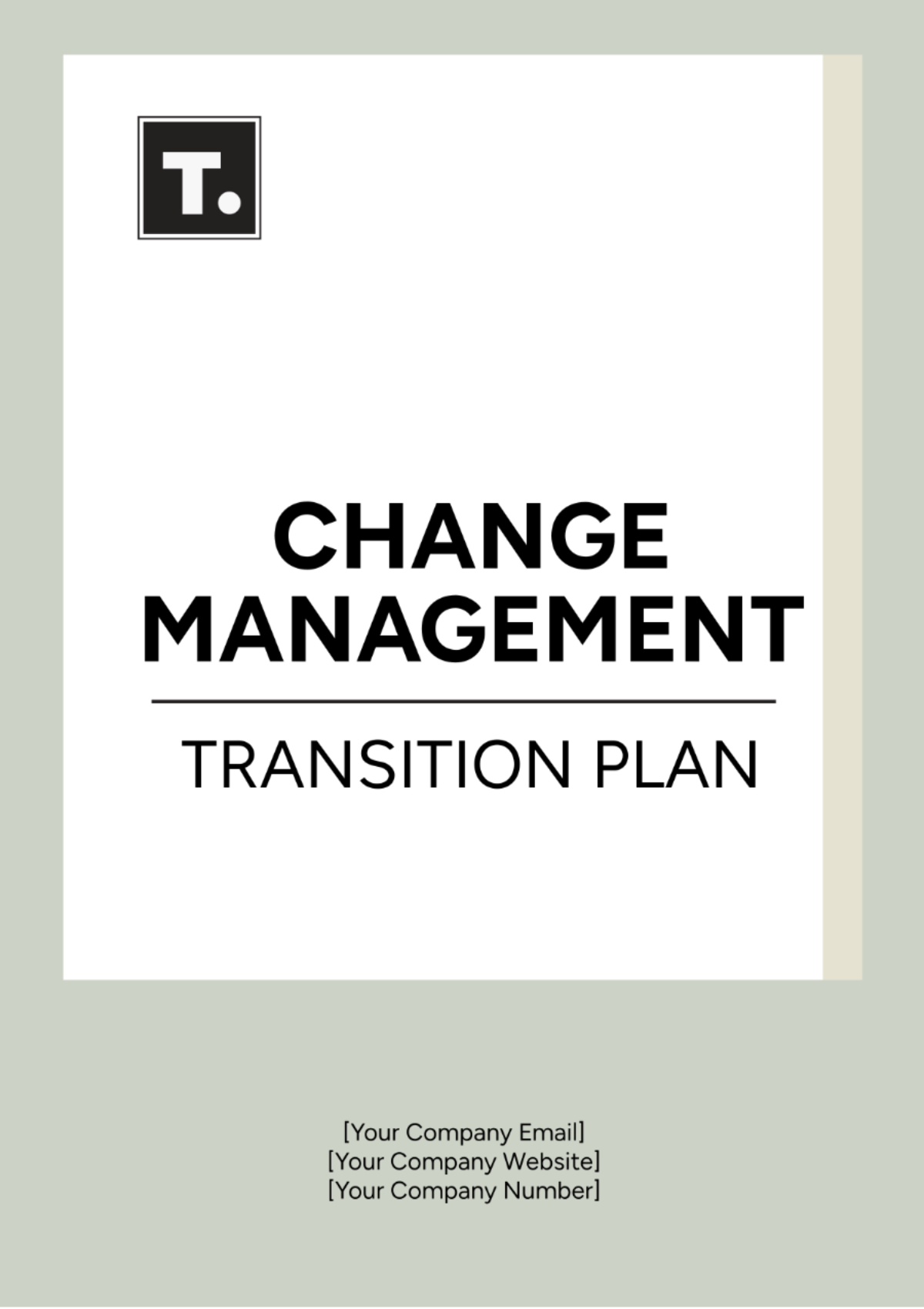CHANGE MANAGEMENT TRANSITION PLAN
I. Introduction
A. Context and Background
The Change Management Transition Plan is designed to address the upcoming organizational changes at [Your Company Name]. These changes include a merger with [Acquiring Company Name], restructuring of departments, and adoption of new technologies to streamline operations.
B. Purpose and Scope
The primary purpose of this plan is to ensure a smooth transition that minimizes disruptions and maintains operational efficiency. It encompasses all departments and levels within the organization affected by the changes.
II. Objectives and Key Results (OKRs)
A. Transition Objectives
Ensure smooth integration of [Acquiring Company Name] with existing operations.
Minimize employee resistance and ensure buy-in for the new structure.
Implement new technologies seamlessly to improve productivity.
Maintain customer satisfaction and business continuity throughout the transition.
B. Key Results Metrics
Percentage of employees trained on new processes and technologies.
Employee engagement scores before and after the transition.
Customer satisfaction surveys during and post-transition period.
Financial performance metrics (e.g., revenue, cost savings) post-transition.
III. Stakeholder Engagement and Analysis
A. Stakeholder Identification
Stakeholder Name | Role | Contact Information |
|---|---|---|
Executive Leadership Team | Support and Champion | [Contact Number] |
Department Heads and Managers | Implementation Leads | [Contact Number] |
Employees | All Departments | [Contact Number] |
B. Stakeholder Analysis
Executive Leadership Team: Support and champion the transition, and ensure resource allocation.
Department Heads and Managers: Implement changes at the departmental level, and communicate with teams.
Employees: Adapt to changes, provide feedback, and participate in training programs.
IV. Communication and Engagement Strategy
A. Communication Objectives
Keep stakeholders informed about the transition progress and upcoming changes.
Create open channels for feedback and address concerns promptly.
Ensure consistent and transparent communication across all levels.
B. Communication Channels and Tools
Email Updates: Weekly updates on transition progress and key milestones.
Town Hall Meetings: Monthly meetings for Q&A sessions and updates from leadership.
Intranet Portal: Centralized platform for resources, FAQs, and communication archives.
C. Change Champions and Advocates
Change Champions: Identified employees in each department to promote and support the transition.
Advocacy Programs: Recognition and rewards for employees actively engaged in driving change.
V. Impact Assessment & Risk Management
A. Impact Analysis
Departmental Workflows: Assessing changes in workflows due to restructuring.
Technology Integration: Evaluating impact on existing systems and data migration.
Employee Morale: Monitoring and addressing concerns to maintain productivity.
B. Risk Mitigation and Contingency Plans
Training and Support: Comprehensive training programs to address skill gaps.
Communication Strategy: Regular updates and town hall meetings to address rumors and misinformation.
Change Management Team: Dedicated team to address unforeseen challenges and implement contingency plans.
VI. Training and Development Initiatives
A. Training Programs
Technology Training: Hands-on workshops for new software and tools.
Leadership Development: Training sessions for managers on change leadership and communication.
Soft Skills Training: Communication, teamwork, and adaptability workshops for all employees.
B. Learning and Development Resources
Training Modules: Online modules accessible on the company intranet.
Knowledge Base: FAQs, guides, and resources for self-paced learning.
Mentorship Programs: Pairing new employees with experienced mentors for on-the-job learning.
VII. Monitoring, Evaluation, and Performance Metrics
A. Key Performance Indicators (KPIs)
Employee Engagement Scores: Quarterly surveys to measure morale and satisfaction.
Technology Adoption Rates: Tracking usage metrics for new systems.
Customer Feedback: Regular surveys and feedback mechanisms.
B. Monitoring and Evaluation Framework
Transition Reviews: Monthly progress reviews with key stakeholders.
Employee Feedback Sessions: Quarterly focus groups and feedback forums.
Data Analytics: Utilizing data to assess performance against KPIs and identify areas for improvement.
VIII. Implementation Plan and Timeline
A. Transition Phases and Milestones
Pre-Transition Preparation: Training needs assessment and communication strategy development.
Transition Execution: Departmental restructuring, technology integration, and training rollout.
Post-Transition Stabilization: Monitoring and support, feedback collection, and performance evaluation.
B. Resource Allocation and Responsibilities
Project Management Team: Oversight of transition phases, resource allocation, and timeline adherence.
Departmental Leads: Implementation of changes within respective departments, and communication with teams.
Change Management Team: Continuous monitoring, risk mitigation, and adjustment of plans as needed.
IX. Conclusion and Next Steps
The successful implementation of this Change Management Transition Plan is critical for achieving our organizational goals and ensuring a seamless transition for all stakeholders. By adhering to the strategies outlined in this plan and leveraging the support of our dedicated teams and change champions, we will navigate this period of change with resilience and success.






